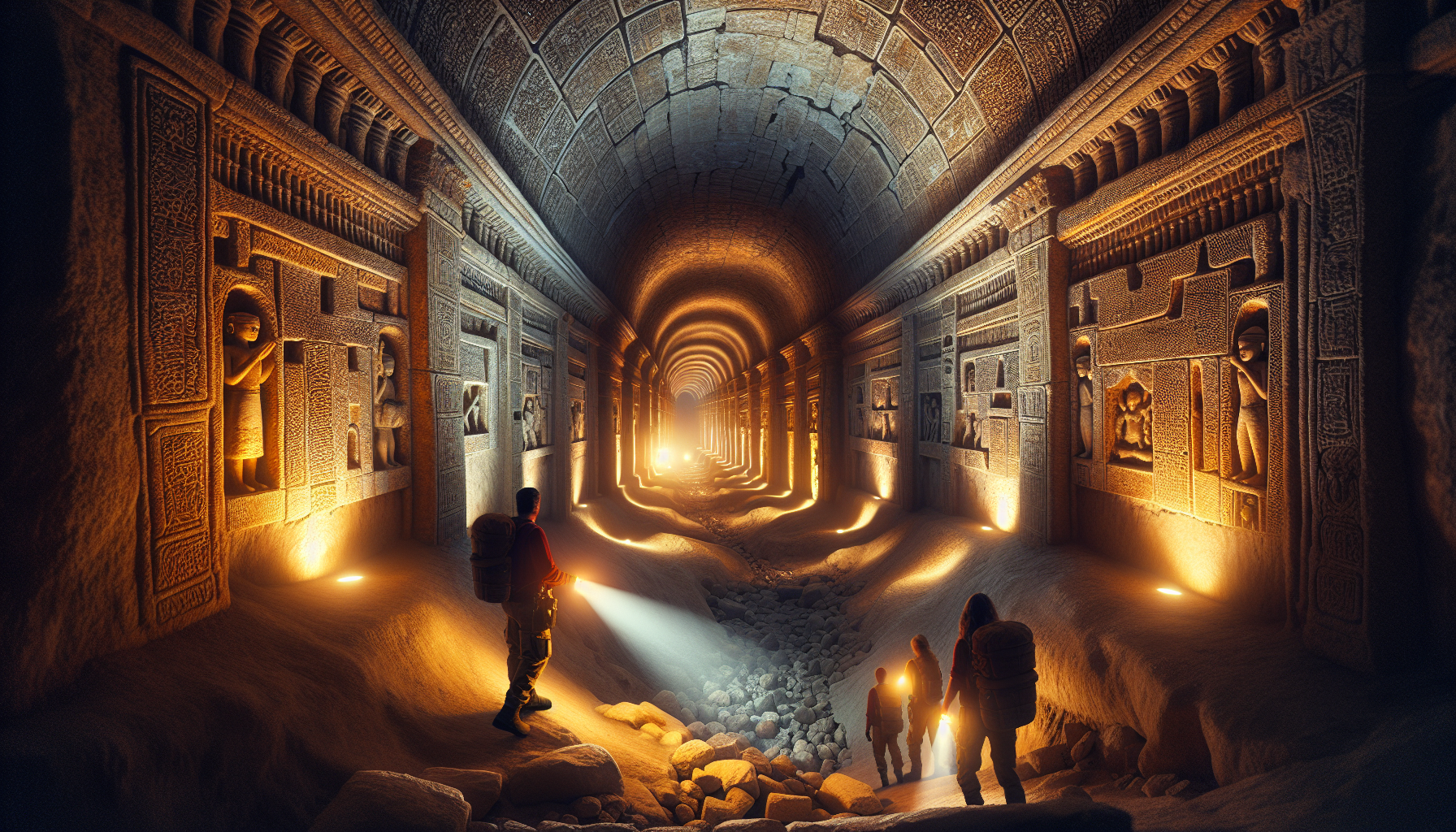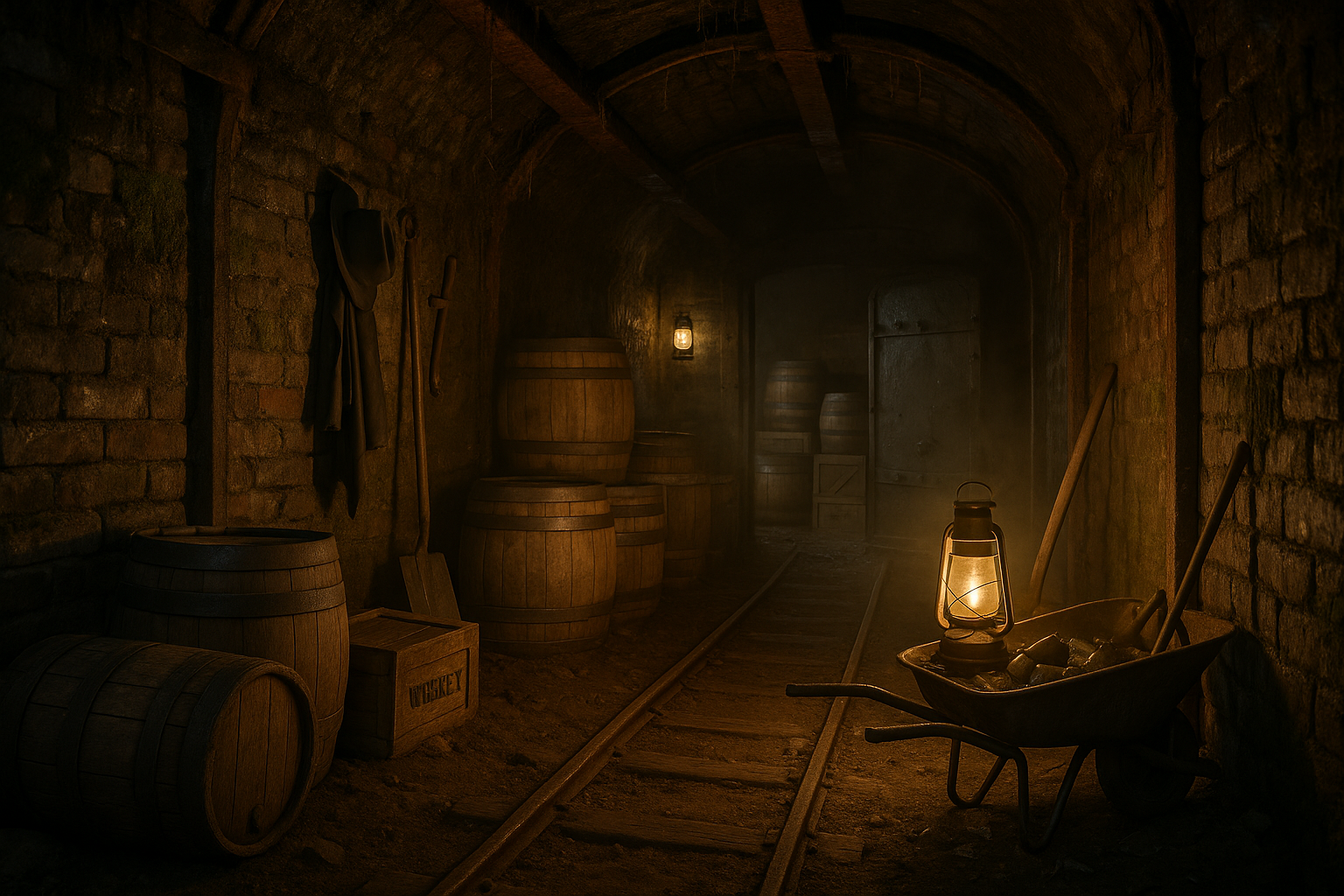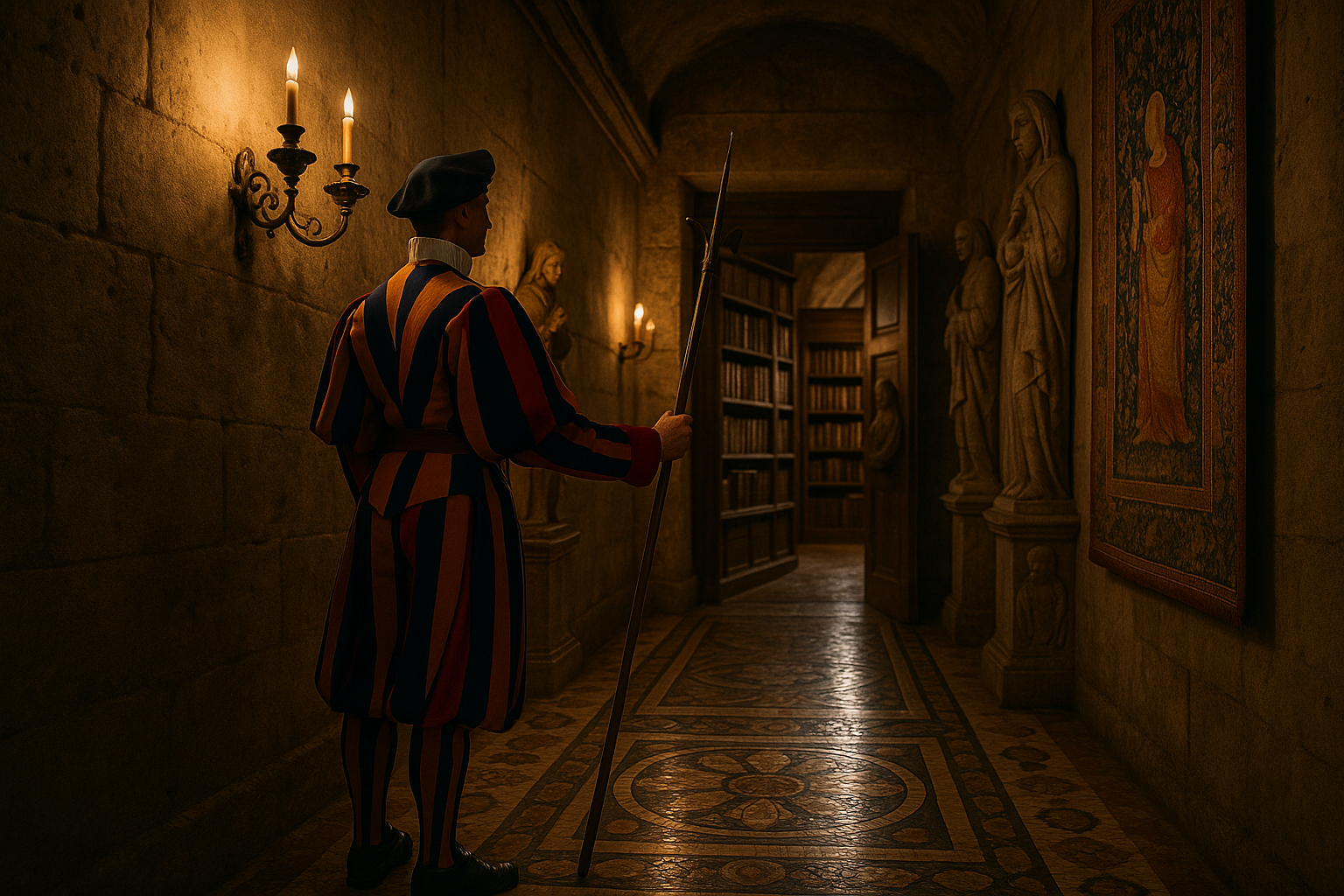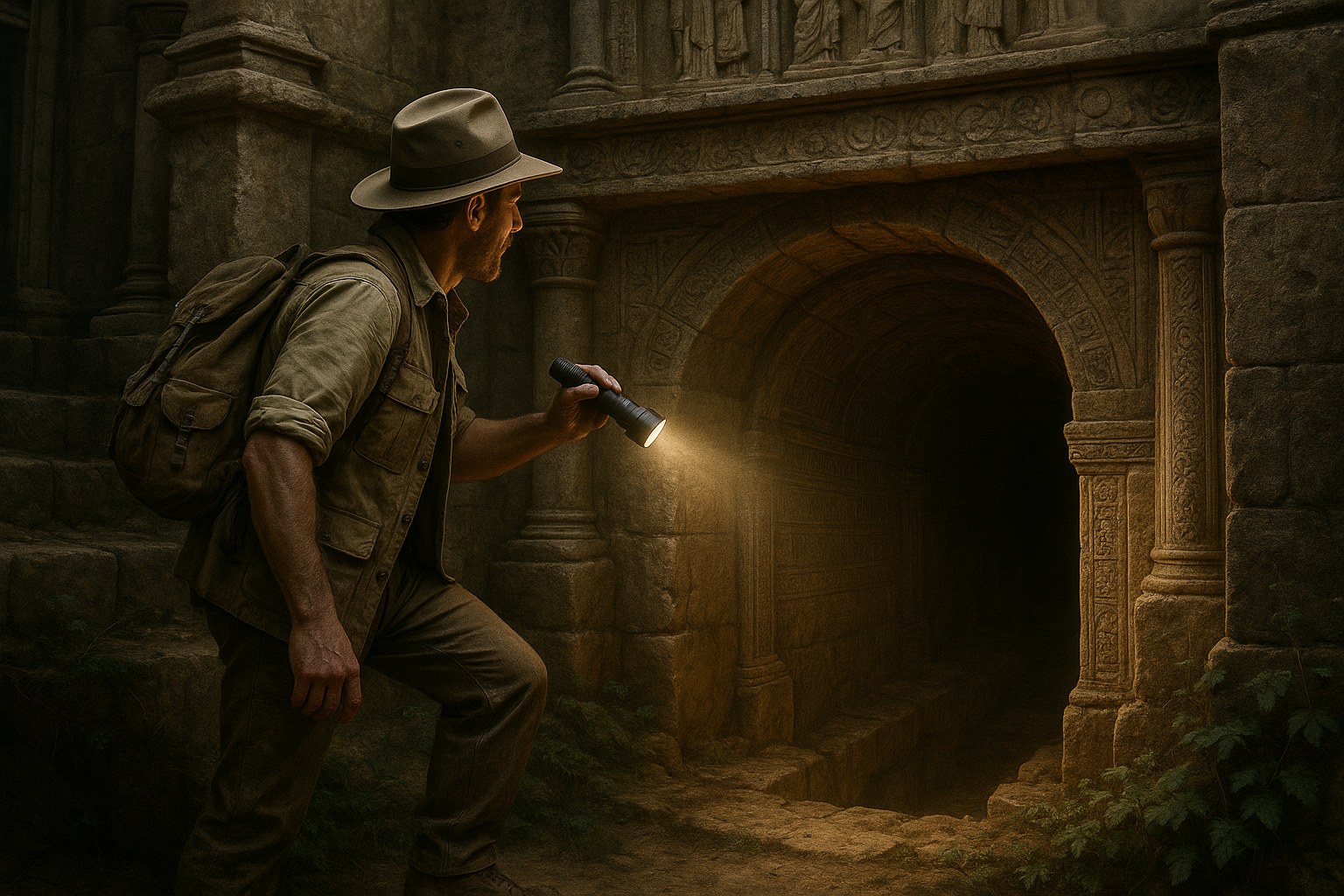Beneath the surface of our bustling modern world lies a hidden tapestry of ancient history waiting to be discovered. Imagine, if you will, descending into the depths of the Earth, where whispers of bygone eras echo through winding tunnels and expansive caverns. This isn’t the plot of a science fiction novel, but a reality that invites explorers and history enthusiasts alike to delve into the mysteries of the world’s oldest underground cities. 🏛️ These subterranean wonders not only challenge our understanding of ancient civilizations but also offer profound insights into human resilience, innovation, and the timeless quest for survival.
As we embark on this journey through the veiled corridors of time, we’ll explore the myriad reasons these underground sanctuaries were constructed. Were they built out of necessity, offering refuge from marauding invaders and harsh climates? Or were they sacred spaces, designed for spiritual rituals and community gatherings? Throughout our exploration, we will uncover the complex tapestry of motives and means that led to the creation of these hidden cities. We’ll shine a light on the awe-inspiring ingenuity that enabled ancient societies to carve entire worlds out of rock, and the enduring legacy they left for us to discover.
Our voyage will take us across continents, from the labyrinthine depths of Derinkuyu in Turkey to the awe-inspiring networks of Naours in France. In each location, we’ll uncover the unique characteristics that set these underground marvels apart, from their architectural features to the cultural stories etched into their walls. We’ll delve into the lives of the people who inhabited these spaces, piecing together their daily routines, their fears, and their hopes, as we walk through the very same corridors they once did. 🌍 By the end of our expedition, you’ll not only have a deeper appreciation for these architectural feats but also for the indomitable spirit of the civilizations that thrived beneath the ground.
Join us as we unearth the ancient wonders that lie beneath our feet, and prepare to be captivated by tales of mystery, survival, and ingenuity. Through a blend of historical analysis, archaeological insights, and vivid storytelling, this exploration will transport you back in time, offering a rare glimpse into a world that, although hidden, is far from forgotten. Whether you’re a seasoned historian, an archaeology enthusiast, or simply curious about the wonders of the past, this journey promises to ignite your imagination and inspire a newfound appreciation for the secrets of the underground. 🗝️
The Mystique of Underground Cities
Exploring the depths of ancient underground cities is akin to peeling back layers of history. These hidden metropolises, carved into the earth, offer a glimpse into the lives of civilizations long gone, their ingenuity, and their daily struggles. They present a unique intersection of archaeology, architecture, and mystery, revealing how ancient societies adapted to their environment and safeguarded themselves from external threats.
To truly appreciate these underground wonders, one must first understand the context and necessity behind their creation. Historically, underground cities were constructed as shelters during wars, sanctuaries from persecution, and solutions to harsh climates. The motivation behind building these subterranean sanctuaries varied from defense against invaders to escape from oppressive regimes. By examining specific examples of these underground marvels, we gain insight into the technological prowess and cultural priorities of our ancestors.
The Intricacies of Derinkuyu, Turkey
Derinkuyu is perhaps the most famous of the underground cities, located in the Cappadocia region of Turkey. This multi-level city, discovered in 1963, stretches over 60 meters deep and could accommodate up to 20,000 people along with their livestock and supplies. Its origins date back to the 8th century BCE, though it is believed to have been expanded and used extensively by early Christians to escape Roman persecution.
The architectural features of Derinkuyu are staggering. The city is comprised of tunnels, living quarters, food storage, a school, and even a church. Its design reflects a deep understanding of subterranean architecture, with ventilation shafts that provided fresh air throughout the city. The entrances could be sealed with massive stone doors, protecting its inhabitants from invaders. Exploring Derinkuyu is like stepping into a time capsule that encapsulates centuries of human adaptation and resilience.
| Feature | Details |
|---|---|
| Depth | Over 60 meters |
| Population Capacity | Up to 20,000 people |
| Main Use | Protection from invasions and persecution |
To experience the marvels of Derinkuyu, consider watching this YouTube video: Exploring Derinkuyu Underground City by National Geographic. This visual tour offers a closer look at the city’s labyrinthine passages and historical context.
The Mystery of Naours, France
Naours, located in northern France, is another captivating example of an ancient underground city. Unlike Derinkuyu, Naours was primarily used as a refuge and safe haven during times of conflict. The city spans over 3 kilometers of tunnels and was used as a shelter during the 9th-century Viking raids and later during the World Wars. Its strategic location and design made it an ideal place for people seeking safety from marauders.
Naours is fascinating not only for its function as a refuge but also for its later uses. During World War I, it served as a temporary camp for soldiers, and the walls are adorned with graffiti and inscriptions left by those who stayed there. These etchings are historical records, preserving the thoughts and emotions of those who found sanctuary within its walls.
Naours’ Architectural Features
The architecture of Naours is characterized by its network of galleries, chapels, and living spaces. These were ingeniously ventilated and connected, ensuring the survival of its inhabitants. The city’s entrances were camouflaged, blending with the surrounding landscape to evade detection from enemies. This aspect of stealth and protection underlines the strategic importance of underground cities throughout history.
- Over 3 kilometers of tunnels
- Used during the Viking raids and World Wars
- Home to inscriptions from WWI soldiers
The Enigma of Kaymakli, Turkey
Kaymakli, another remarkable underground city in Cappadocia, is a testament to the engineering marvels of ancient societies. Located just a short distance from Derinkuyu, Kaymakli is believed to have been connected to its neighbor through an extensive tunnel system. This city, dating back to 2000 BCE, showcases the ingenuity of its builders in utilizing the soft volcanic rock of the region.
Kaymakli’s design is similar to that of Derinkuyu, featuring multiple levels of living quarters, storage rooms, and communal spaces. The city could support thousands of people, with complex systems for air circulation and waste management, allowing prolonged habitation during times of crisis.
| Feature | Details |
|---|---|
| Age | Approximately 4000 years old |
| Depth | As deep as 60 meters |
| Population Capacity | Thousands of people |
The seamless integration of everyday life with defensive features in Kaymakli illustrates the dual purpose of these underground sanctuaries. They were not only homes but also fortresses, capable of withstanding sieges and providing shelter from external threats. This duality of function underscores the adaptive strategies of ancient communities in ensuring their survival.
The Historical Legacy of Kaymakli
The history of Kaymakli is steeped in the cultural transitions of the region. Originally constructed by the Phrygians, it later became a refuge for early Christians, like many other Cappadocian cities. Its strategic location made it a pivotal site during various military campaigns, with its extensive network of tunnels serving as escape routes and supply lines.
Today, Kaymakli stands as a monument to human resilience and innovation. Its preservation offers valuable insights into the lives of its inhabitants, their social structures, and their responses to environmental and political challenges. For those interested in exploring this subterranean marvel, watching this video provides an engaging overview: Kaymakli Underground City Tour by Travel & Discover.

Conclusion
Exploring the depths of ancient underground cities unveils a remarkable tapestry of human ingenuity, adaptability, and survival. These subterranean metropolises, hidden beneath the surface of the earth, offer a profound insight into the lives and cultures of our ancestors. Through our journey into these ancient wonders, we’ve navigated the awe-inspiring structures, the sophisticated engineering, and the rich histories that these underground cities embody.
At the forefront of this exploration, we delved into Derinkuyu and Kaymakli in Turkey, which stand as testaments to the complex societies that thrived thousands of years ago. These ancient cities, with their multi-level labyrinths, were meticulously carved out of the soft volcanic rock of Cappadocia. Their construction reflects not only the architectural prowess of their creators but also their resilience and strategic foresight. As refuges during times of conflict, these underground havens provided shelter and protection, showcasing an ingenious use of natural resources to ensure the survival of entire communities.
Moving beyond Turkey, we uncovered the subterranean secrets of Naours in France. Although initially used for limestone extraction, the tunnels of Naours became a sanctuary during both World Wars. This adaptation highlights a recurring theme in the story of underground cities: the capacity of human beings to transform their environments to meet their changing needs. Similarly, in Italy, the ancient city of Orvieto revealed its network of caves and tunnels, a testament to the Etruscans’ adeptness in creating a harmonious blend of functionality and sustainability in their urban planning.
The exploration of these underground cities also brought us to the remarkable city of Beijing, where the Underground City was constructed during the Cold War as a means of protecting its citizens from potential threats. This modern usage of subterranean spaces, although distinct from the ancient cities, underscores a timeless human instinct to seek refuge and safety beneath the earth’s surface.
As we explored these hidden cities, we were not merely uncovering stones and structures, but also the narratives and legacies of the people who inhabited them. These underground spaces served as bustling hubs of activity, complete with living quarters, storage rooms, places of worship, and even livestock areas. They were places where families grew, cultures thrived, and histories were forged.
The study of these underground cities is not just an academic pursuit; it is a journey into the human spirit. It calls upon us to reflect on our shared heritage and the remarkable capacity for innovation and survival that defines the human experience. Each underground city we explored serves as a chapter in the broader story of humanity, illustrating the diverse ways in which societies have responded to the challenges of their environments.
The importance of preserving and studying these ancient wonders cannot be overstated. They offer invaluable lessons in architecture, engineering, and community resilience. Moreover, they provide a unique lens through which we can examine our past and draw inspiration for the future. By understanding how our ancestors overcame adversity and utilized their surroundings, we can glean insights into how we might address the challenges facing our world today, from urbanization and climate change to resource management and cultural preservation.
We encourage you, dear reader, to continue this exploration beyond the confines of this article. Whether by visiting these sites, engaging with scholarly works, or supporting conservation efforts, there are myriad ways to deepen your connection to these ancient cities. Share your insights and experiences with others, sparking conversations that can lead to a greater appreciation of our world’s rich history. Engage with online platforms and communities dedicated to archaeology and history, where you can contribute your thoughts and learn from others who share your interest.
Furthermore, we invite you to reflect on the broader implications of these underground marvels. How might their lessons be applied to modern urban planning or environmental challenges? How can the innovative spirit of our ancestors inspire contemporary solutions? By pondering these questions, you become a part of the ongoing dialogue that bridges the past with the present and future.
In conclusion, our journey through the oldest underground cities in the world has not only illuminated the past but also shed light on the enduring human quest for survival and innovation. These ancient wonders are more than mere remnants of bygone eras; they are beacons of human tenacity and creativity. Let us cherish and protect them, ensuring that future generations can marvel at the extraordinary achievements of our ancestors. As we unearth these ancient wonders, we uncover the profound connection that binds us all across time and space.
🌍🌟 Let us continue to explore, learn, and celebrate the incredible legacy of humanity’s underground ingenuity. Share your thoughts, engage with your community, and keep the spirit of discovery alive. Together, we can ensure that these ancient wonders inspire generations to come.
For further reading and exploration, consider visiting reputable resources such as Smithsonian Magazine or Archaeology Magazine. These platforms offer a wealth of information and insights into the fascinating world of ancient civilizations.
Toni Santos is a visual storyteller and artisan whose work explores the quiet power of what lies beneath. With a deep fascination for subterranean and hidden architecture, Toni uncovers the layers, voids, and forgotten spaces that shape our built environment from the shadows.
His art is a journey through the unseen — from ancient underground chambers to sealed passageways, service tunnels, and foundations buried in time. Each creation tells a story of silence, secrecy, and structure — revealing how absence and concealment can be just as meaningful as what’s visible above ground.
Whether working through visual compositions, architectural studies, or symbolic handcrafted pieces, Toni captures the soul of hidden spaces. His work bridges art and archaeology, blending design with discovery. Trained in visual design and traditional techniques, Toni creates with intention. His pieces don’t just depict — they interpret, inviting viewers to rethink what space, memory, and architecture mean when they’re hidden from view.
As the creative force behind Vizevex, Toni shares this perspective through curated visual narratives, symbolic collections, and interpretive essays that give voice to the quiet geometries beneath our feet.
His work is a tribute to:
The mystery of spaces built to be forgotten
The symbolism embedded in foundations, voids, and passageways
The timeless connection between human intention and hidden structure
Whether you’re an artist, an urban explorer, or someone fascinated by the unseen frameworks that support our world, Toni invites you into a realm where architecture becomes myth — one corridor, one layer, one buried story at a time.





